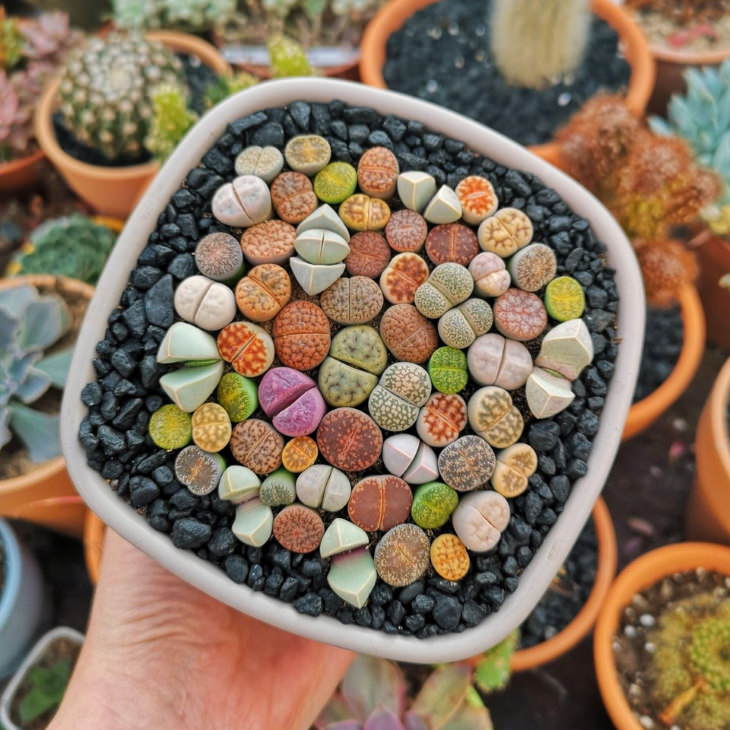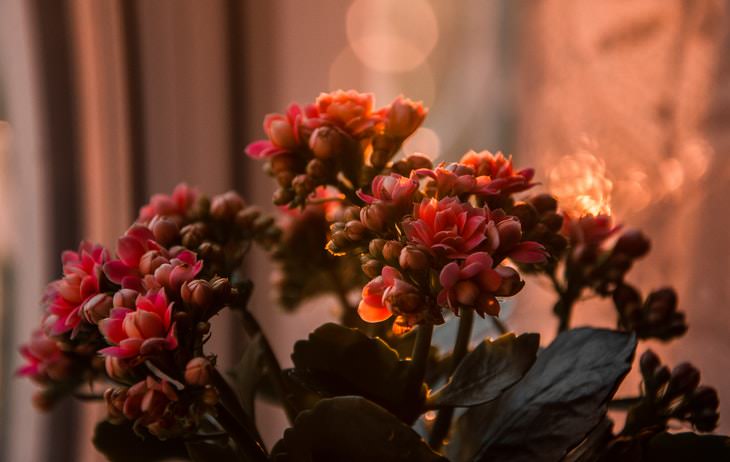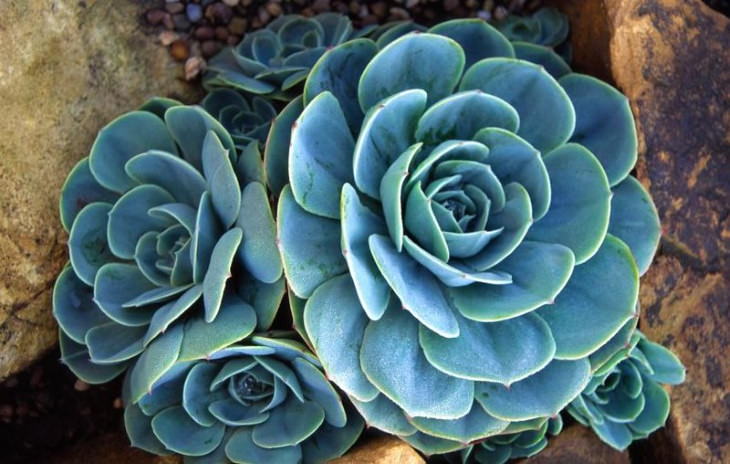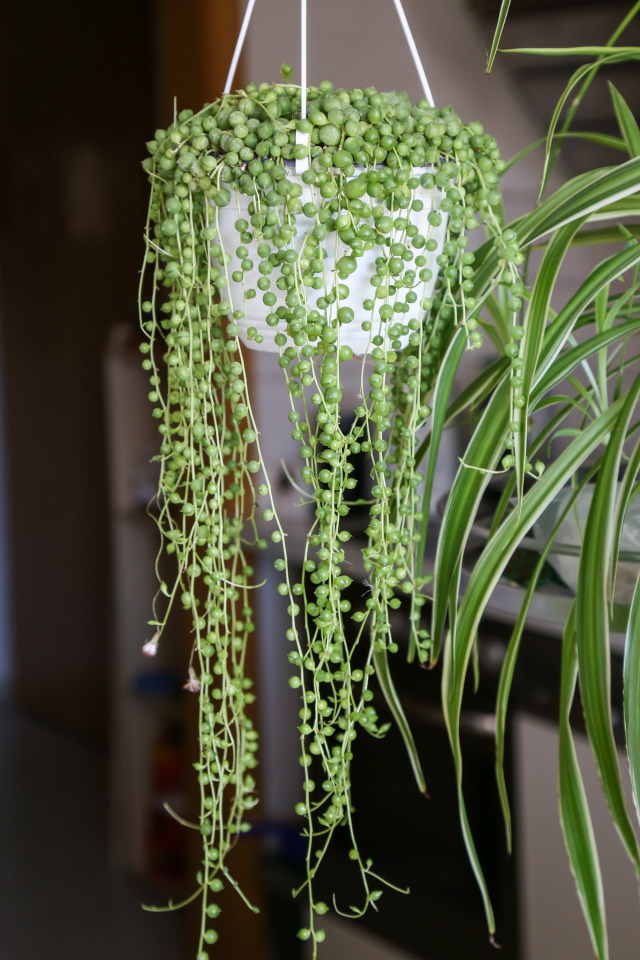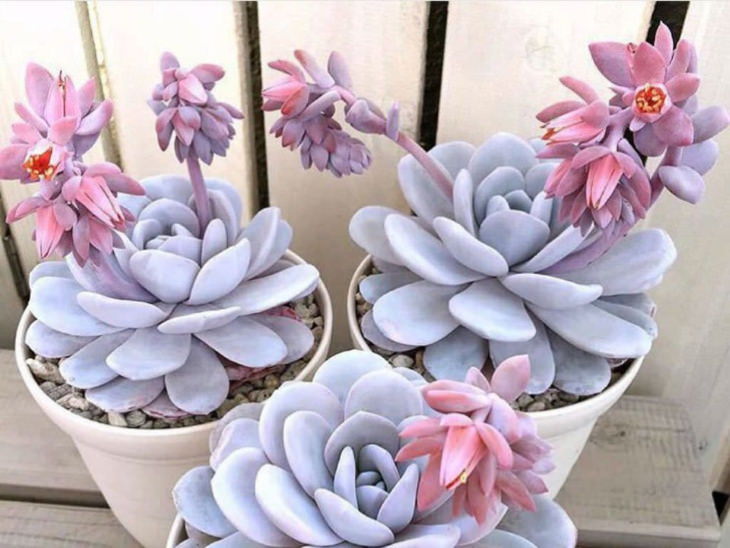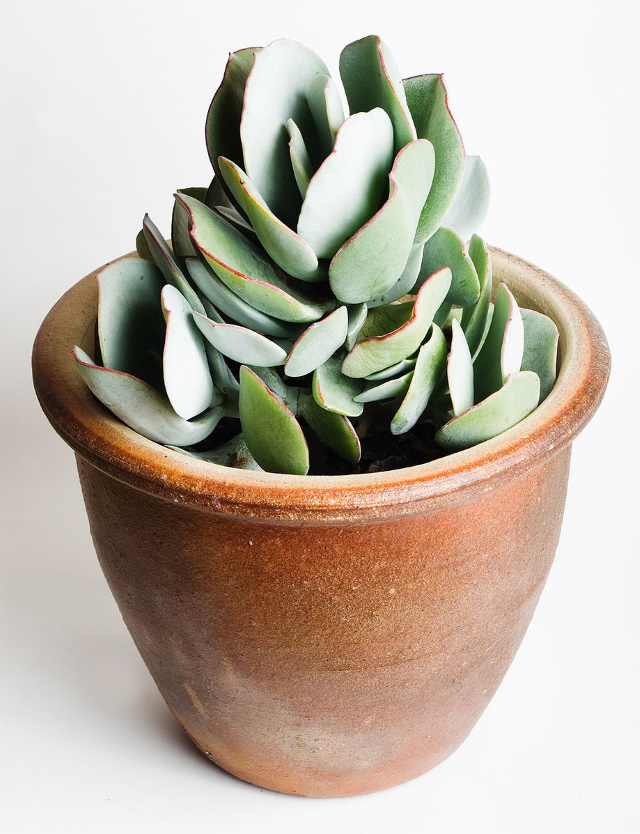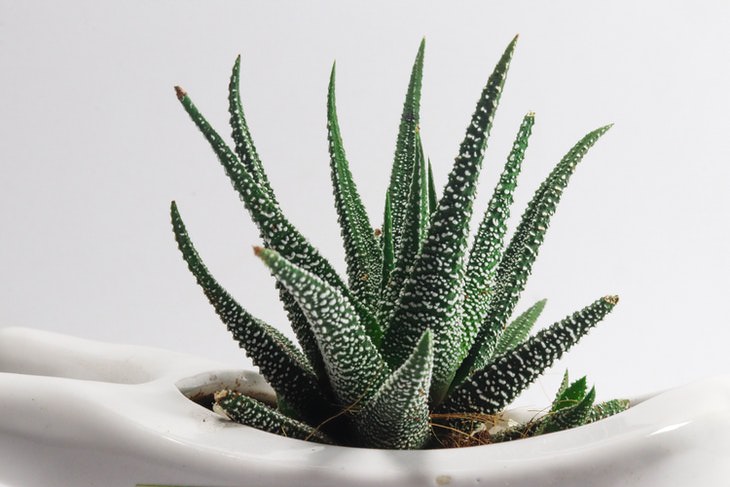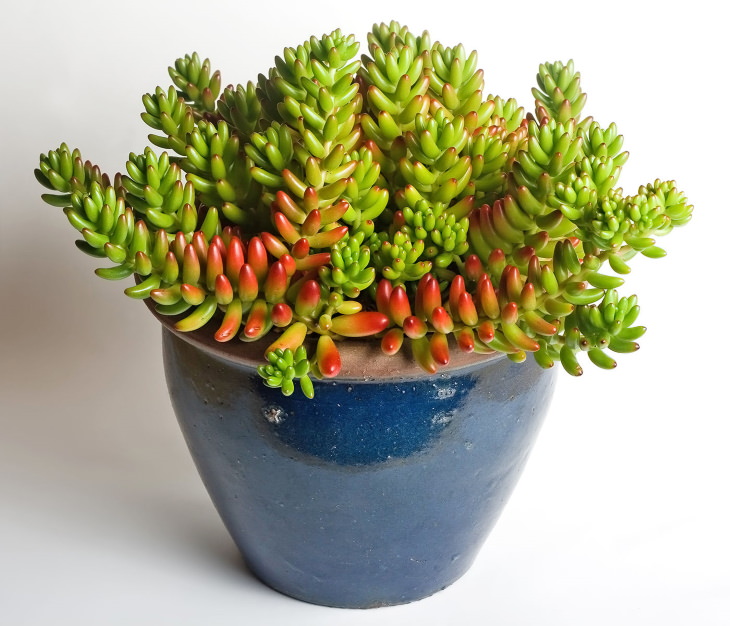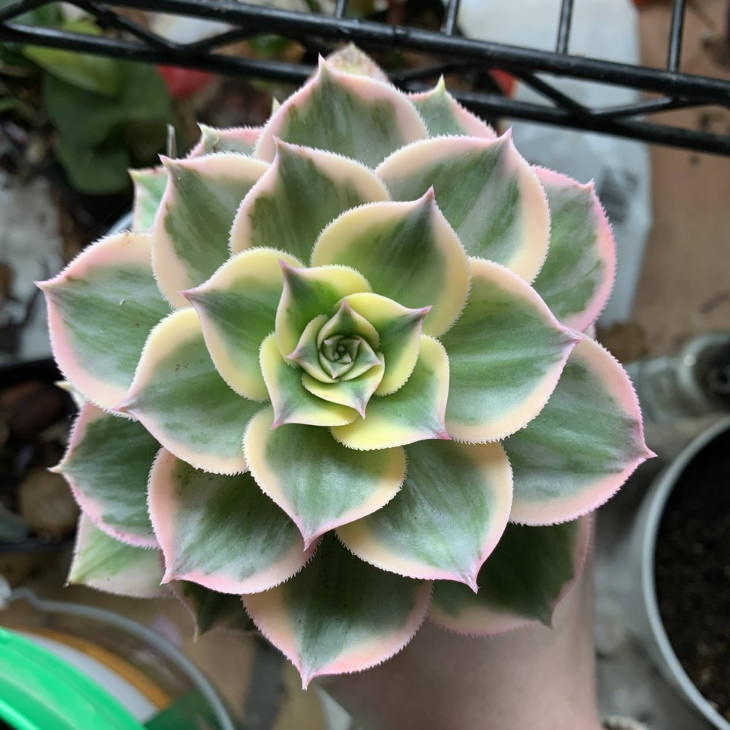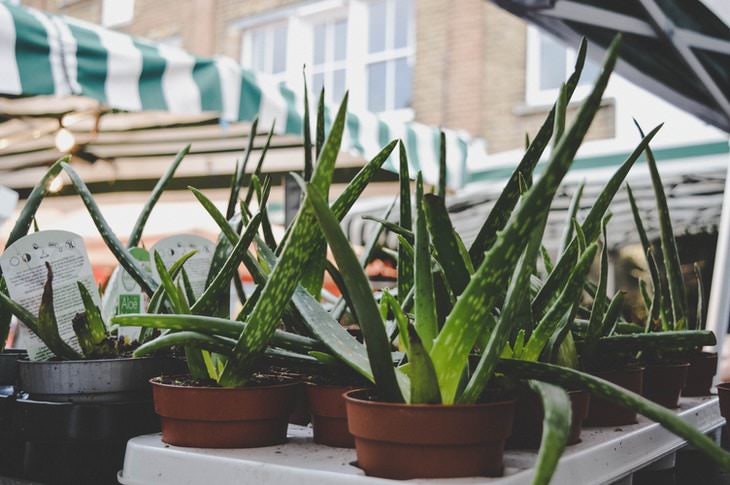1. Living Stones (Lithops)
Lithops is an entire genus of unique-looking plants that look like colorful pebbles. Their unusual shape is an adaptation that allows them to camouflage themselves as rocks and avoid being eaten by animals. These plants are native to South Africa, and they come in a wide range of colors and shapes.
Most living stone plants are rather small and they don’t grow very fast, so they won’t take up a lot of your space. Many species will bloom a single flower from between their fleshy leaves in the summer or fall. Place your living stone plants on a sunny windowsill or any other place in your home that gets at least 4-5 hours of sunlight.
2. Flaming Katy (Kalanchoe blossfeldiana)
If you prefer flowering plants, the Flaming Katy plant is a safe bet. This succulent is also known as the Christmas kalanchoe, and it is available in many different colors: red, yellow, lilac, and orange are the most common ones. This beautiful plant is native to Madagascar, and it can start blooming at any time of the year.
Like all succulents, Flaming Katies prefer lots of sunshine, and they can be quite sensitive to the cold and drafts. For this reason, try to keep it at temperatures of 60-85°F (15-29°C) all year.
3. Echeveria Glauca (Echeveria glauca)
Many species of succulents grow in beautiful rosette shapes that resemble flowers. These evergreen blooms come in many colors and sizes. One of the most beautiful rosette succulents that can be grown indoors is the Echeveria glauca. Native to Mexico, these succulents are mostly blue or green in color, but some cultivars have red or pink tips. These plants are relatively small in size, so they will happily live on your windowsill, where they will be able to get plenty of sun.
4. String of Pearls (Senecio rowleyanus)
If you’re looking for a trailing plant that will look perfect in a hanging basket or a high shelf, the string of pearls succulent is an excellent one to buy. This succulent looks like a waterfall of bluish-green pearls, and it’s one of the most beautiful succulent species, in our opinion. The string of pearls is native of South Africa and it prefers bright light. Keep the plant away from drafty areas and blasts of cold in the winter, especially if you live in a colder climate.
5. Echeveria Laui (Echeveria laui)
Echeveria laui is the cousin of Echeveria Glauca, and it too is native to Mexico. Like most echeverias, Echeveria laui is a small, slow-growing plant, and it can be planted in the same with other succulents to create a bouquet of colorful evergreen flowers.
Echeveria laui is definitely the centerpiece of any indoor garden, as its pale pink or sometimes pastel purple or blue tone is a definite eye-catcher. When watering the plant, make sure that you water the soil and not the plant itself. Water droplets and touching the plant can wipe away the white dusting that grows naturally on the plant.
6. Silver Jade Plant (Crassula arborescens)
The silver jade plant is also known as the silver dollar plant. This succulent originated in South Africa, and it has thick branches with pale oval leaves. In the winter, the plant blooms pink or white flowers. Unlike the majority of succulents, all jade plants prefer indirect sun, otherwise, their leaves can become scorched. The plant prefers when you allow for the soil to dry out completely in-between watering.
7. Zebra Plant (Haworthiopsis fasciata)
The zebra plant is one interesting little plant from South Africa. It’s somewhere between a cactus and a soft succulent because it has a rosette but is hard to the touch. The zebra plant is named after the prominent white stripes on its leaves. These plants are very hardy and require very little upkeep. Zebra plants sometimes bloom in the fall, but they produce very small white flowers.
8. Jelly Bean Plant (Sedum rubrotinctum)
With its chubby bulbous leaves and long stalks, the jelly bean plant is one pretty plant. Also known as “pork and beans,” this plant is native to Mexico. The plant is usually fully green, but the tips of the leaves can sometimes develop a reddish or brownish hue when exposed to more sunlight. The plant enjoys plenty of sun and is drought-tolerant. Expect yellow flowers to appear in the spring.
9. Sunburst (Aeonium decorum)
One more stunning rosette-type succulent is the sunburst plant. Another name for this plant is the copper pinwheel. The plant grows naturally on the Canary Islands, and it has distinct reddish or pink tips and yellow edges on the leaves. The succulent requires sandy medium soil and bright sun, but it also tolerates a little shade. Note that all Aeoniums, including the Sunburst, require more regular watering.
10. Aloe (Aloe vera)
Even if you didn't particularly like any of the succulents we listed above, consider growing an Aloe vera plant. Everyone knows this plant, and for good reason. Aloe is well-known for its medicinal properties, all of which we've listed in the article The Miraculous Health Benefits of Aloe Vera.
You can simply cut off part of one leaf and squeeze out some aloe sap to heal a scrape or burn. Apart from that, the aloe plant itself is quite pretty: it has thick pointy leaves that are green and dotted with white spots. Aloe is native to the Middle East, and it's a very simple plant to grow because it's drought-tolerant and doesn't require as much sunlight as most succulents.
Share these beautiful plants with others!

